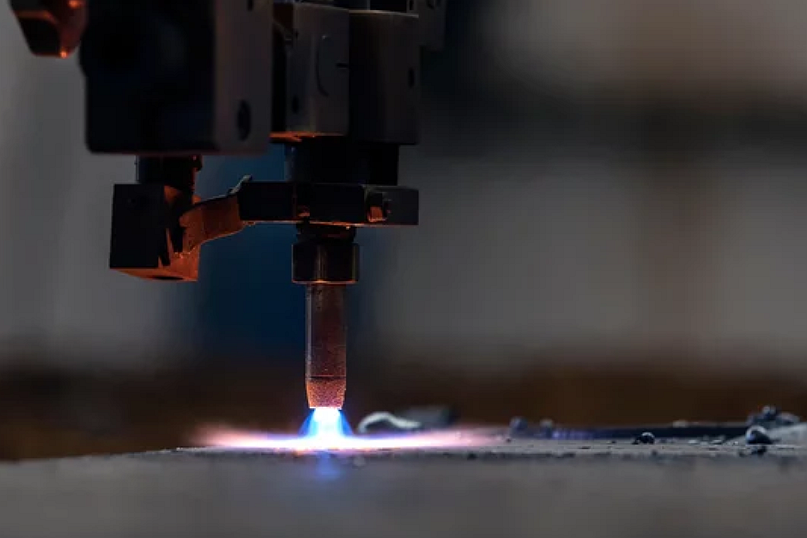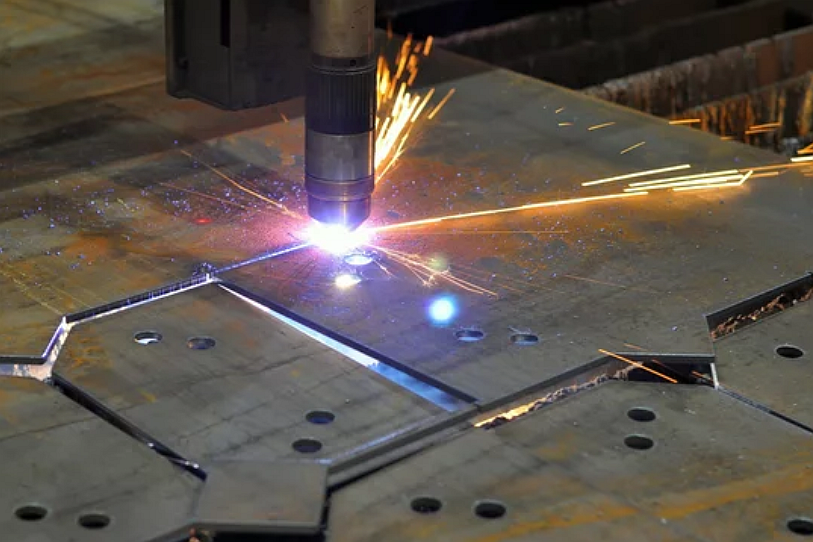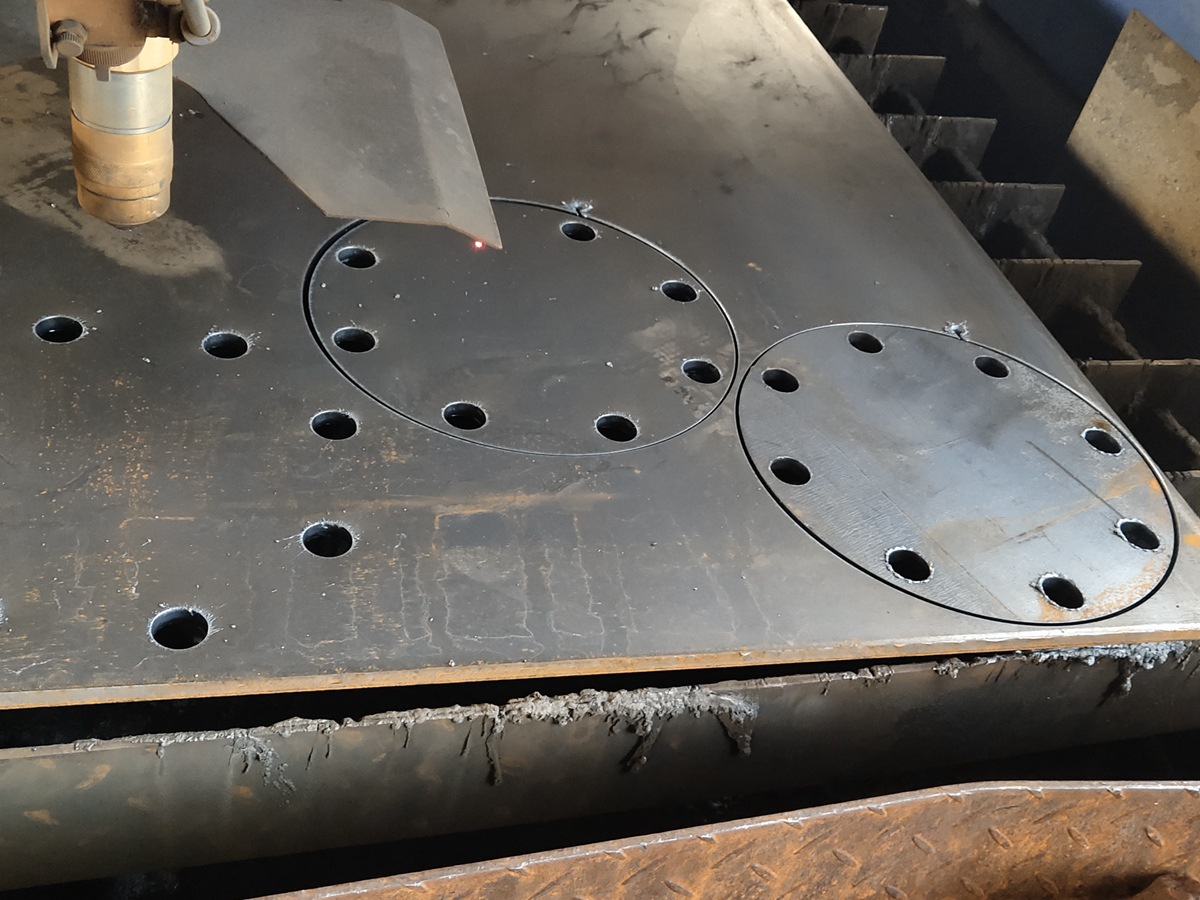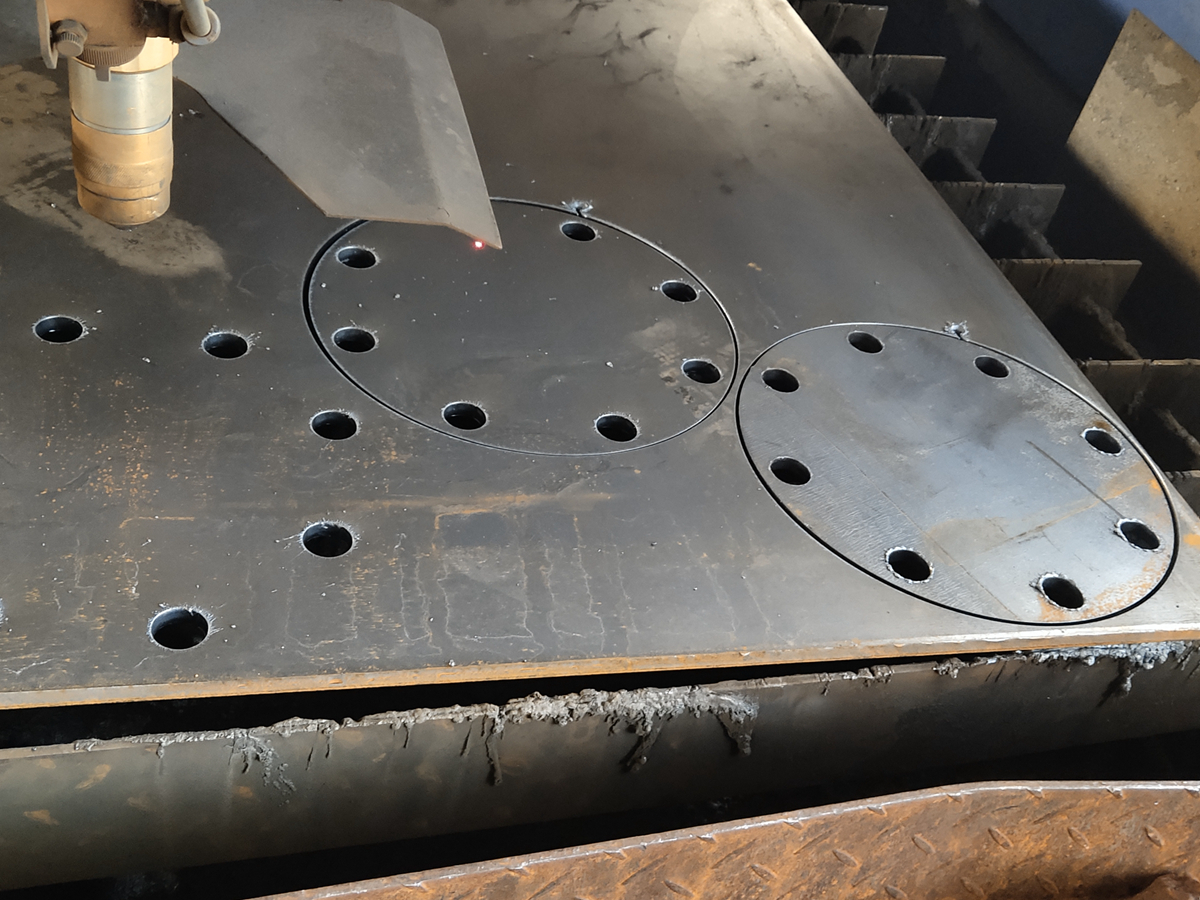What Are The Types of Plasma Cutting
Plasma cutting comes in many types. Neway provides CNC plasma-cutting services. It is Mainly used for sheet metal fabrication. The range of plasma-cutting methods offers metal fabrication solutions for almost any production environment. The type of plasma cutter used is tailored to the specific demands of the application, whether that prioritizes automation, precision, speed, portability, or capability. Continued advances in power supply technology, torch design, and motion control systems further improve plasma cutting performance across this versatile metalworking area.

Manual Plasma Cutting
Manual plasma cutting involves an operator holding a handheld plasma torch to guide it along the desired cut path. It provides complete manual control of the positioning and speed of the plasma arc. The torch is connected to a separate power supply unit, providing high-voltage electricity and compressed air or gas to create the plasma arc.
Manual plasma cutting allows for versatile, portable use for straight cuts, angles, holes, and freehand shapes. It is well-suited for site work, smaller jobs, occasional cutting, or positions that are difficult to access with large mechanized equipment. The cut quality heavily depends on the skill of the operator. Thicknesses up to 1 inch can be reliably cut manually.
Mechanized Plasma Cutting
The plasma torch is mounted to a mechanical carriage, rail, boom, or robotic arm for mechanized plasma cutting to provide automated motion. It takes over the manual torch manipulation required by handheld plasma cutting. The positioning of the torch is controlled via numerical control programming or CAD/CAM software.
Mechanized plasma cutting is commonly used with an X-Y table, reciprocal table, radial arm, or multiple torch rail system. It improves precision and repeatability while allowing for longer, complex cuts. Faster cutting speeds are possible since the system smoothly guides the torch. Mechanized systems are highly productive for repetitive cutting in fabrication shops.
CNC Plasma Cutting
CNC plasma cutting uses a computer numeric control (CNC) system to fully automate the plasma cutting process. The CNC machine processes Pre-programmed parts designs, precisely controlling the torch positioning and cutting parameters. Multi-axis coordination of the torch enables angled cuts.
CNC plasma systems provide fast, consistent results for high-volume production cutting. Part programming allows for intricate shapes. Height control actuators automatically adjust the torch height above the workpiece surface. The CNC manages precise control of torch speed and arc current. Automated gas console systems and material handling equipment can be integrated with CNC plasma tables.
Precision Plasma Cutting
Precision plasma systems are utilized when maximum precision is required, such as in aerospace components. Precision plasma cutters employ advanced power supplies, tighter torch and electrode tolerances, and rigid yet precise numerical control systems.
Precision plasma cutting can achieve tolerances down to +/- 0.005 inches with exceptionally smooth, narrow kerf cuts. Technological features like dual gas flows separate the plasma and shield gases to concentrate and stabilize the arc. Precision drives, rigid structures, and thermal compensation enable precise repeatability. This level of plasma cutting accuracy approaches what is possible with CNC milling or laser cutting.
Underwater Plasma Cutting
Specialized underwater plasma cutting systems allow the metal to be cut beneath the water's surface. It has applications for cutting or dismantling structures underwater without draining or moving water. Underwater plasma cutting is primarily used in offshore oil & gas, underwater construction, salvage, and nuclear industries.
These systems use a compound water vortex around the plasma arc to prevent contact between water and the arc. Pressure within the water vortex matches the surrounding pressure, enabling stable plasma cutting up to around 30 feet deep. The dry zone created by the vortex lets metal be cut rapidly underwater with minimal quality reduction.
Micro Plasma Cutting
For intricate cuts with fine detail, microplasma cutting is used. By operating at lower amperages with a minor fine-focused plasma arc, microplasma can deliver thin, highly accurate cuts. The smaller plasma torch nozzle provides a tighter arc columMicroplasmaasma is suited for cutting small holes, slots, apertures, and complex shapes where minimum heat input is desired. It is widely used to cut small profile tubing and fittings out of sheet metal in aerospace and other applications requiring intricate, highly finished parts.
Inverter Plasma Cutting
Inverter plasma cutters contain advanced power electronics called insulated-gate bipolar transistors (IGBTs). This inverter technology makes the plasma cutter more lightweight and portable by generating higher power from a smaller electrical package.
Inverters provide faster duty cycles, reduced noise, and improved arc stability compared to traditional transformer designs. Inverter plasma cutters are more energy efficient, allowing for smoother arc ramping and current control. The technology is now standard in most new portable plasma-cutting systems for construction, maintenance, and fabrication.
Dual Flow Plasma Cutting
Dual-flow plasma torches utilize separate gas supplies and flow for the plasma arc and the shielding gas envelope around the arc column. It separates control of the plasma jet and shielding vortex stability, improving cut quality and capability.
Independently optimizing the plasma gas flow rate and arc channel diameter boosts arc power density. Separate shield gas flow allows for cleaner cuts with less dross buildup. Dual-flow torches also permit faster cutting speeds, edge starts, extended consumable life, and improved cut angularity.
High Definition of Plasma Cutting
High-definition plasma cutting represents a newer evolution of technologies focused on achieving superior cut quality, precision, and speed. These systems aim to cut faster and cleaner than standard plasma with very low angularity for near laser-like results.
ThinKerf torches, ultra-fast drives, high-precision height controls, and adaptive current controls optimize the cut. High-definition plasma cutters rival laser cutting in edge quality and precision on materials up to 1 inch thick. The fast, narrow plasma arc reduces angularity and beveling.
Air Plasma Cutting
Rather than using compressed bottled gases like nitrogen, some plasma cutters operate using filtered shop air. It makes for a highly portable, self-contained system that avoids needing an external gas supply.
Air plasma cutters produce a decent cut quality using only shop air, whether portable or built-in. Cut capacity is more limited, ranging up to around 3/8 inches for handheld air plasma cutters. Consumable parts must be replaced more often when using air. For thicknesses over 1/2 inch, air plasma cutting is not generally practical.
Why Choose Neway
With 30 years of experience, Neway has honed its skills in producing custom precision components. Their expansive manufacturing capabilities span the full range of metal and plastic fabrication, including injection molding of plastics or metal powders, die casting, investment casting, CNC machining, and 3D printing. Neway's 50,000-square-foot facility houses an arsenal of advanced fabrication machines skillfully operated by their talented technicians. Neway consistently delivers high-quality precision parts catered to their client's specifications, from rapid prototyping of new product concepts to full-scale production of complex components.



